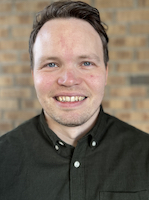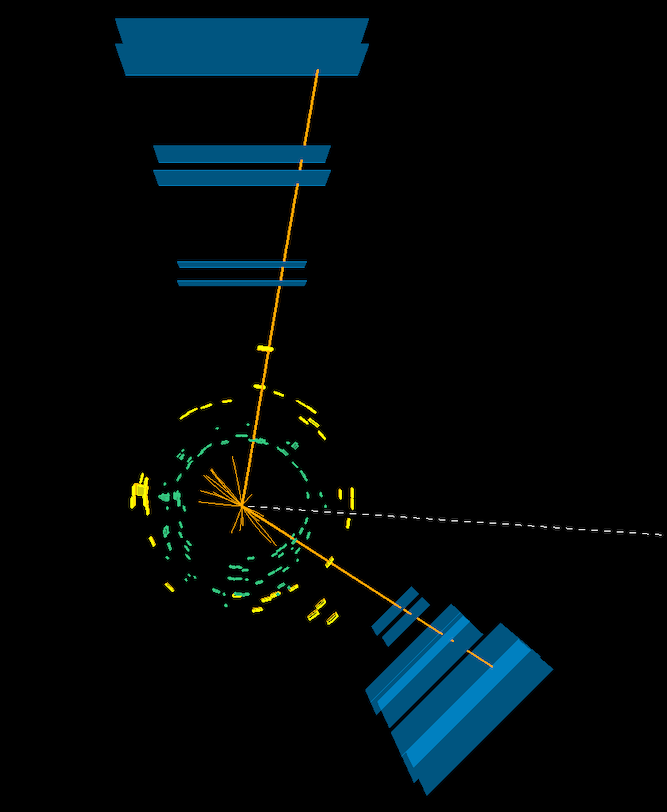The PhD defence and trial lecture will be streamed. The chair of the defence will moderate the disputation.
Ex auditorio questions: the chair of the defence will invite the audience to ask ex auditorio questions.
→ Live streaming of trial lecture and disputation
→ Request for thesis copy (available until the disputation starts)
Trial lecture
Time and place: October 24, 2022; 10:15 AM, Kelvin (V316), Fysikkbygningen
Title: "How to detect gravitational waves?"
Main research findings
Supersymmetry is a popular extension to the Standard Model (SM) of particle physics, which predicts a supersymmetric partner to each SM particle. Among these are four charginos and four neutralinos, which are partners of the charged and neutral gauge bosons and the Higgs boson of the SM. The lightest neutralino is often considered a dark matter candidate. If supersymmetry exists in nature, we should be able to produce supersymmetric particles in high-energy particle collision experiments. In this thesis, I have analyzed measurements made by the ATLAS detector, during proton collisions provided by the Large Hadron Collider between 2015 and 2018. The goal was to search for signals that cannot be explained by the well-known SM particles. More specifically, I searched for charginos and neutralinos in collision events where two leptons (electrons or muons) have been measured by the detector. If no such signal is found, we can exclude some of the scenarios where supersymmetric particles should have shown up, had they existed. I approached the problem in two ways: first by using the conventional cut-and-count method, and finally by using machine learning to classify collision events as being either a supersymmetric signal or a SM background process. No supersymmetric signal was found, and therefore we were able to extend our exclusion limits on how light the charginos and neutralinos can be.
Main research findings - Norwegian
Supersymmetri er en populær utvidelse av standardmodellen (SM) for partikkelfysikk, som spår en supersymmetrisk partner til hver SM-partikkel. Blant disse er det fire charginoer og fire nøytralinoer, som er partnere til de ladde og nøytrale justerbosonene og Higgs-bosonet i SM. Det letteste nøytralinoet blir ofte regnet for å være en mørk materie-kandidat. Dersom supersymmetri eksisterer i naturen, skal det være mulig å produsere supersymmetriske partikler i høyenergiske partikkelkollisjoner. I denne avhandlingen har jeg analysert målinger utført av ATLAS-detektoren, under protonkollisjoner ved Large Hadron Collider mellom 2015 og 2018. Målet var å søke etter signaler som ikke kan forklares av de velkjente SM-partiklene. Mer spesifikt har jeg søkt etter charginoer og nøytralinoer i kollisjoner der to leptoner (elektroner eller myoner) har blitt målt i detektoren. Dersom ingen slike signaler blir funnet, kan vi ekskludere noen av scenarioene der supersymmetriske partikler skulle ha vist seg, dersom de hadde eksistert. Jeg angrep problemet på to måter: først ved den konvensjonelle kutt-og-tell-metoden, og deretter ved hjelp av maskinlæring til å klassifisere kollisjonshendelser til å enten være et supersymmetrisk signal eller en bakgrunnsprosess fra SM. Ingen supersymmetriske signaler ble funnet, så vi kunne derfor utvide eksklusjonsgrensene for hvor lette charginoene og nøytralinoene kan være.
Candidate contact information
Phone: 92087959
Adjudication Committee
- Professor Albert De Roeck, CERN/University of Antwerp
- Professor Jan Conrad, Stockholms universitet
- Professor Larissa Bravina, Universitetet i Oslo
Supervisors
- Professor Farid Ould-Saada, Department of Physics, University of Oslo, Norway
- Dr. Eirik Gramstad, Department of Physics, University of Oslo, Norway
Chair of defence
Professor Anette Eleonora Gunnæs, Department of Physics, University of Oslo, Norway
Contact information to Department: Line Trosterud Resvold

